Rough Lumber
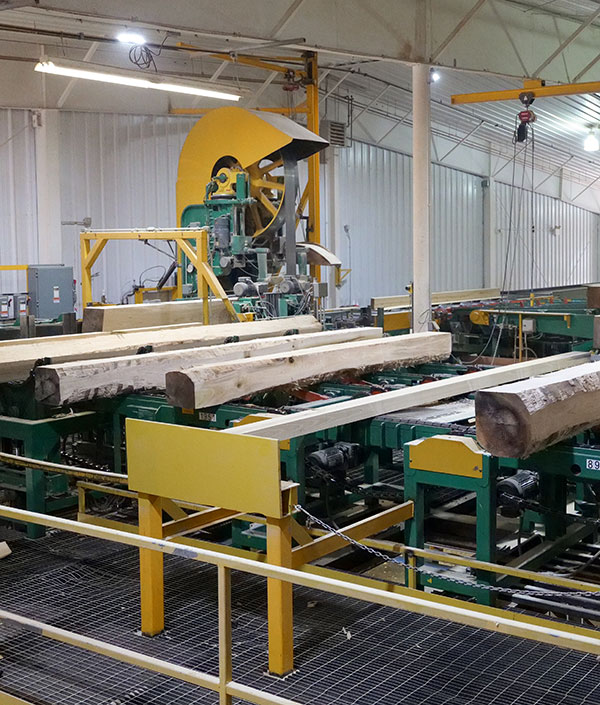
Global production
As a leading manufacturer of Appalachian hardwood products, we have two large sawmills and kilns that produce large volumes of hardwood lumber products for customers across the globe. Our state-of-the-art sawmill equipment includes a resaw turn around mill, one of just two in the world.
- 4 MM board feet of inventory of green and KD lumber
- Variety of width, length, and color sorts available
- Accurate lumber tallies
- Accurate grade (get what you order)
- Experienced in exporting hardwood lumber
Capacities:
- 8.4 MM board feet of lumber produced per year
- 10.5 MM board feet of lumber dried per year
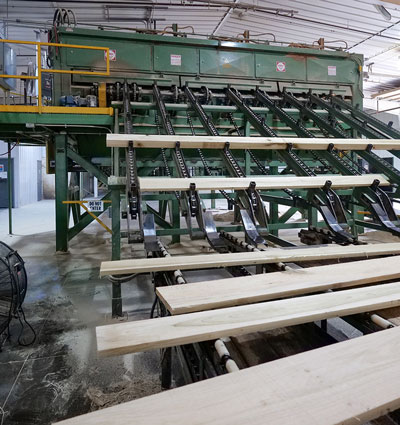
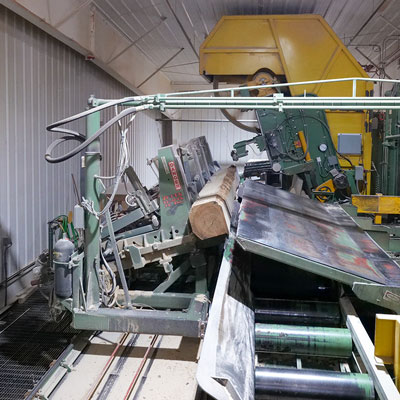
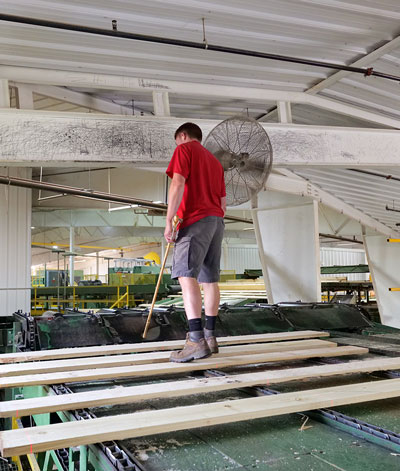
Green lumber
Our sawmills and kilns allow us to manufacture a wide selection of lumber and wood products to help service nearly any need. Some of the green lumber we produce includes:
- 4/4 to 16/4 lumber in a range of hardwoods, including red oak, white oak, poplar, beech, ash, hard maple, soft maple, red elm, grey elm, and more.
- Quarter and Rift sawn lumber in a variety of species.
- Industrial wood products (sawdust, chips, and bark mulch)
- Construction-grade barn beams
Kiln-dried lumber
Yoder Lumber has hundreds of thousands of board feet of kiln-dried hardwood lumber available in multiple native species. This helps us maintain our reputation as one of America's most trusted providers of quality Appalachian hardwoods.

Some of our other products and capabilities include:
One-of-a-kind pieces like spalted and highly figured wood, live edge slabs, and a wide variety of lumber in multiple species and grades.
The ability to create custom loads with lengths and grades to meet your needs and ship your hardwood lumber directly.
Automated bin sorting for fast and accurate processing of your lumber.
Premium quality kiln-dried lumber in smaller quantities in a variety of thicknesses and colors.
Experienced staff to help make sure your lumber is packaged properly and shipped quickly.
Wood species
Yoder Lumber stocks most Appalachian hardwood lumber species and select imports. We offer multiple grades and can create custom hardwood products to meet your needs. Browse the images displayed below to learn more about the Appalachian hardwood species we carry.

Alder
Red alder, a relative of birch, is almost white when freshly cut but quickly changes on exposure to air, becoming light brown with a yellow or reddish tinge. Heartwood is formed only in trees of advanced age and there is no visible boundary between sap and heartwood. The wood is fairly straight-grained with a uniform texture.
Common Uses:
Furniture Kitchen cabinets Doors, shutters Mouldings and turnings Panel stock Carvings Kitchen utensils
Available in: 4/4 5/4 6/4 8/4

Ash
Red alder, a relative of birch, is almost white when freshly cut but quickly changes on exposure to air, becoming light brown with a yellow or reddish tinge. Heartwood is formed only in trees of advanced age and there is no visible boundary between sap and heartwood. The wood is fairly straight-grained with a uniform texture.
Common Uses:
Furniture Kitchen cabinets Doors, shutters Mouldings and turnings Panel stock Carvings Kitchen utensils
Available in: 4/4 5/4 6/4 8/4
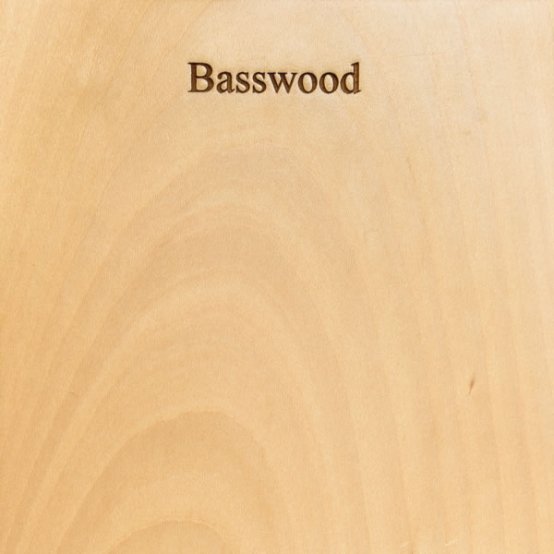
Basswood
The sapwood of basswood is usually quite large and creamy white in color, merging into the heartwood which is pale to reddish brown, sometimes with darker streaks. The wood has a fine uniform texture and indistinct grain that is straight.
Common Uses:
Carvings Turnings Furniture Pattern-making Mouldings Millwork Musical instruments Venetian blinds and shutters
Available in: 4/4 5/4 6/4

Beech
The sapwood is white with a red tinge, while the heartwood is light to dark reddish brown. The wood is generally straight-grained with a close uniform texture. Common Uses: Furniture Doors Flooring Millwork Paneling Brush handles Woodenware Bending stock Toys and turnings Food and liquid containers
Common Uses:
Furniture Doors Flooring Millwork Paneling Brush handles Woodenware Bending stock Toys and turnings Food and liquid containers
Available in: 4/4
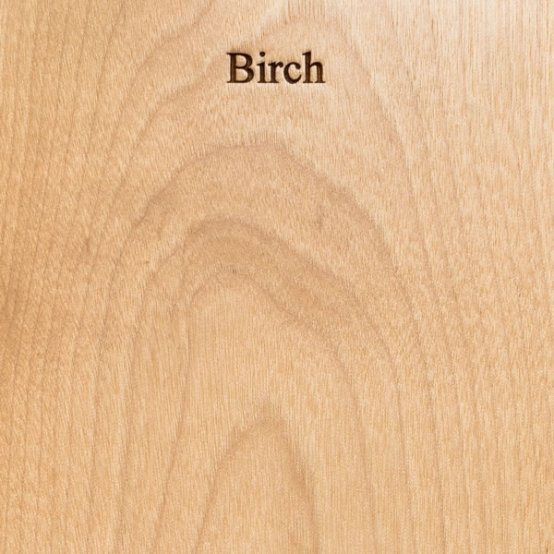
Birch
Birch has a white sapwood and light reddish brown heartwood. The wood is generally straight-grained with a fine uniform texture. Generally characterized by a plain and often curly or wavy pattern.
Common Uses:
Furniture Millwork Paneling Doors Flooring Kitchen cabinets Turnings Toys
Available in: 4/4 5/4 6/4 8/4

Cedar
Aromatic red cedar has very distinct scent and odor. The color of the heartwood is reddish to violent-brown with the sapwood being a pale yellow. The grain is straight with knots present throughout the wood. Texture of the cedar is very even and fine.
Common Uses:
Fence posts Closet and chest linings Carvings Outdoor furniture Bows Small wooden specialty items
Available in: 4/4
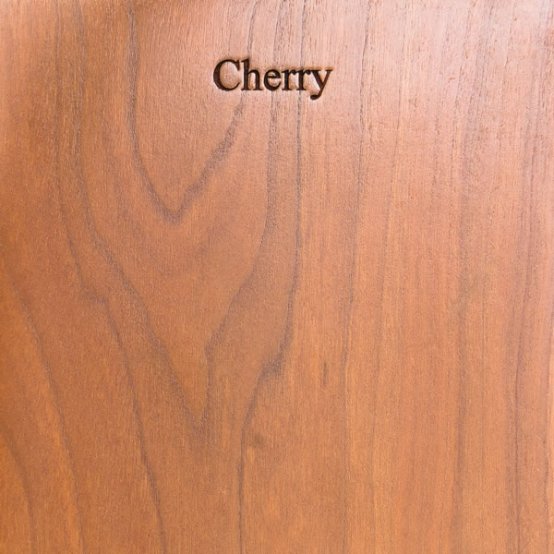
Cherry
The heartwood of cherry varies from rich red to reddish-brown and will darken with age and on exposure to light. In contrast, the sapwood is creamy white. The wood has a fine uniform, straight grain, satiny, smooth texture, and may naturally contain brown pith flecks and small gum pockets.
Common Uses:
Fine furniture and cabinet making Mouldings and millwork Kitchen cabinets Paneling, flooring Doors, boat interiors Musical instruments Turnings Carvings
Available in: 4/4 5/4 6/4 8/4

Curly Hard Maple
The sapwood is creamy white with a slight reddish-brown tinge and the heartwood varies from light to dark reddish-brown. The amount of darker brown heartwood can vary significantly according to growing region. Both sapwood and heartwood can contain pith fleck. The wood has a close, fine, uniform texture and is generally straight-grained, but it can also occur as "curly," "fiddleback," and "birds-eye" figure. "Curly" hard maple is not actually its own species, but is simply a description of the pattern or figure in the grain of the wood. The "curly" description comes from the ripples in the grain that create a three-dimensional effect, making the grain appear as if it has "curled" along the length of the board.
Common Uses:
Flooring Furniture Paneling Ballroom and gymnasium floors Kitchen cabinets Worktops Table tops Butcher blocks Toys Kitchenware and millwork Stairs Handrails Mouldings Doors
Available in: 4/4 5/4

Curly Soft Maple
In most respects, soft maple is very similar to hard maple. Generally the sapwood is greyish-white, sometimes with darker colored pith flecks. The heartwood varies from light to dark reddish-brown. The wood is usually straight-grained. The lumber is generally sold unselected for color. "Curly" Soft maple is not actually its own species, but is simply a description of the pattern or figure in the grain of the wood. The "curly" description comes from the ripples in the grain that create a three dimensional effect, making the grain appear as if it has "curled" along the length of the board.
Common Uses:
Furniture Paneling and millwork Kitchen cabinets Mouldings Doors Musical instruments Turnings

Grey Elm
The color of gray elm wood can vary substantially. The heartwood is grey to reddish-brown color. The sapwood has a white to crème color. The grain is straight but can be interlocking. The wood has a coarse and uneven texture.
Common Uses:
Furniture Flooring Millwork Kitchen cabinets Paneling Caskets
Available in: 4/4
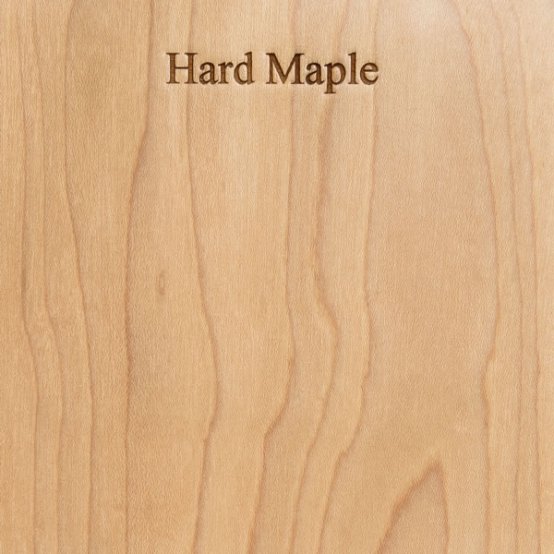
Hard Maple
The sapwood is creamy white with a slight reddish brown tinge and the heartwood varies from light to dark reddish-brown. The amount of darker brown heartwood can vary significantly according to growing region. Both sapwood and heartwood can contain pith fleck. The wood has a close, fine, uniform texture and is generally straight-grained, but it can also occur as "curly," "fiddleback," and "birds-eye" figure.
Common Uses:
Flooring Furniture Paneling Ballroom and gymnasium floors Kitchen cabinets Worktops Table tops Butcher blocks Toys Kitchenware and millwork Stairs Handrails Mouldings Doors
Available in: 4/4 5/4 6/4 8/4

Hickory
The hickories are an important group within the Eastern hardwood forests. Botanically, they are split into two groups; the true hickories, and the pecan hickories (fruit bearing). The wood is virtually the same for both and is usually sold together. Hickory is the hardest, heaviest, and strongest American wood. The sapwood of hickory is white, tinged with inconspicuous fine brown lines, while the heartwood is pale to reddish-brown. Both are coarse-textured and the grain is fine, usually straight but can be wavy or irregular.
Common Uses:
Tool handles Furniture Cabinetry Flooring Paneling Wooden ladders Dowels Sporting goods
Available in: 4/4 5/4 6/4 8/4

Poplar
The sapwood is creamy white and may be streaked, with the heartwood varying from pale yellowish-brown to olive green. The green color in the heartwood will tend to darken on exposure to light and turn brown. The wood has a medium to fine texture and is straight-grained; has a comparatively uniform texture.
Common Uses:
Light construction Furniture Kitchen cabinets Doors Musical instruments Exterior trim and siding Paneling Mouldings and millwork Edge-glued panels Turnings Carvings
Available in: 4/4 5/4 6/4 7/4 8/4 10/4 12/4
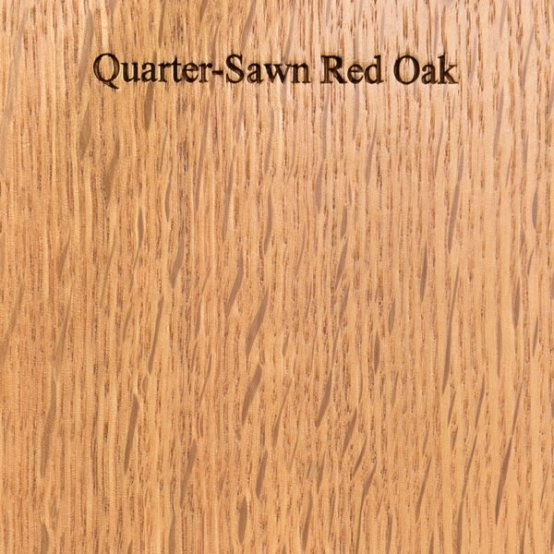
Quarter Sawn Red Oak
The sapwood of red oak is white to light brown and the heartwood is a pinkish-reddish-brown. The wood is similar in general appearance to white oak, but with a slightly less pronounced figure due to the smaller rays. The grain of quarter sawn red oak includes decorative effects such as ray flecks, interlocking, and wavy "ribbon" patterns, which are often featured in fine furniture and cabinetry. Quarter sawn boards are also more stable and are less likely to cup or shrink.
Common Uses:
Furniture Flooring Architectural millwork Mouldings Doors Kitchen cabinets Paneling Caskets
Available in: 4/4 5/4

Quarter Sawn Sycamore
The sapwood of sycamore is white to light yellow, while the heartwood is light to dark brown. The wood has a fine close texture with interlocked grain. Contrasts well with other species. Common Uses: Furniture Furniture parts (drawer sides) Millwork Paneling and mouldings Flooring Kitchenware Butcher blocks Toys Fruit crates Available in:
Common Uses:
Available in: 4/4 4/4 Quarter and Rift Sawn 5/4

Quarter Sawn White Oak
The sapwood is light-colored and the heartwood is light to dark brown. White oak has a medium to coarse texture, with longer rays than red oak. White oak therefore has more figure. The grain of quarter sawn white oak includes decorative effects such as ray flecks, interlocking, and wavy "ribbon" patterns, which are often featured in fine furniture and cabinetry. Quarter Sawn boards are also more stable and are less likely to cup or shrink.
Common Uses:
Furniture Flooring Architectural millwork Mouldings Doors Kitchen cabinets Paneling Barrel staves (tight cooperage) Caskets
Available in: 4/4 5/4 6/4 8/4

Red Oak
The sapwood of red oak is white to light brown and the heartwood is a pinkish reddish-brown. The wood is similar in general appearance to white oak, but with a slightly less pronounced figure due to the smaller rays. The wood is mostly straight-grained, with a coarse texture.
Common Uses:
Furniture Flooring Architectural millwork Mouldings Doors Kitchen cabinets Paneling Caskets
Available in: 4/4 5/4 6/4 7/4 8/4

Sassafras
Sassafras heartwood is pale brown to orange brown, resembling ash or chestnut. The narrow sapwood is yellowish-white. The wood has a coarse texture and is generally straight-grained. Well-known as an aromatic species.
Common Uses:
Furniture Millwork and mouldings Windows Doors and door frames Kitchen cabinets
Available in: 4/4
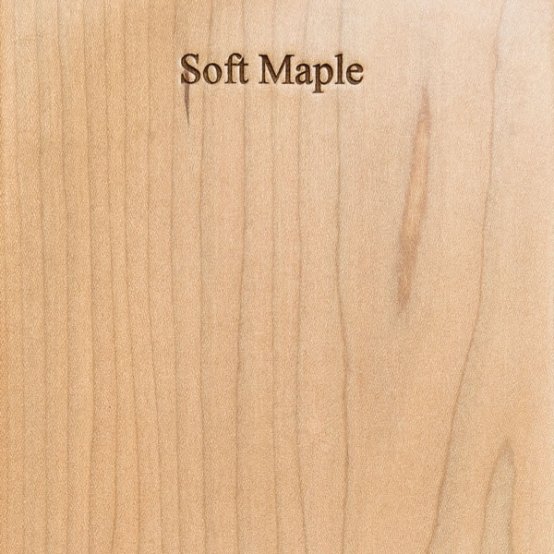
Soft Maple
In most respects, soft maple is very similar to hard maple. Generally the sapwood is greyish-white, sometimes with darker colored pith flecks. The heartwood varies from light to dark reddish-brown. The wood is usually straight-grained. The lumber is generally sold unselected for color.
Common Uses:
Furniture Paneling and millwork Kitchen cabinets Mouldings Doors Musical instruments Turnings
Available in: 4/4 5/4 6/4 8/4
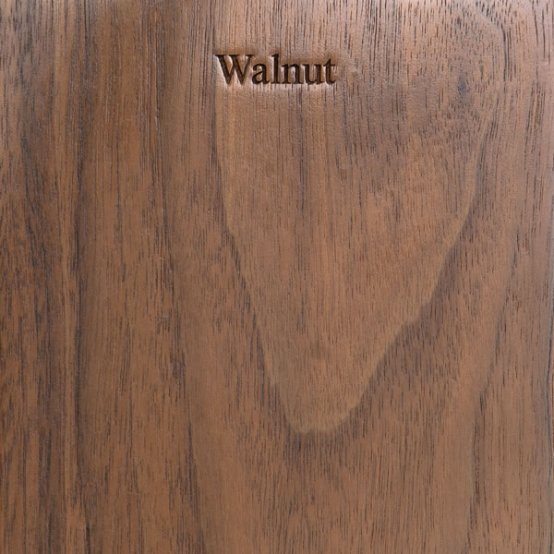
Walnut
The sapwood of walnut is creamy white, while the heartwood is light brown to dark chocolate brown, occasionally with a purplish cast and darker streaks. The wood develops a rich patina that grows more lustrous with age. Walnut is usually supplied steamed, to darken sapwood. The wood is generally straight-grained, but sometimes with wavy or curly grain that produces an attractive and decorative figure. This species produces a greater variety of figure types than any other.
Common Uses:
Furniture Cabinets Architectural millwork Doors Flooring Paneling Gun stocks
Available in: 4/4 5/4 6/4 8/4

White Oak
The sapwood is light-colored and the heartwood is light to dark brown. White oak is mostly straight-grained with a medium to coarse texture, with longer rays than red oak. White oak therefore has more figure.
Common Uses:
Furniture Flooring Architectural millwork Mouldings Doors Kitchen cabinets Paneling Barrel staves (tight cooperage) Caskets
Available in: 4/4 5/4 6/4 8/4
